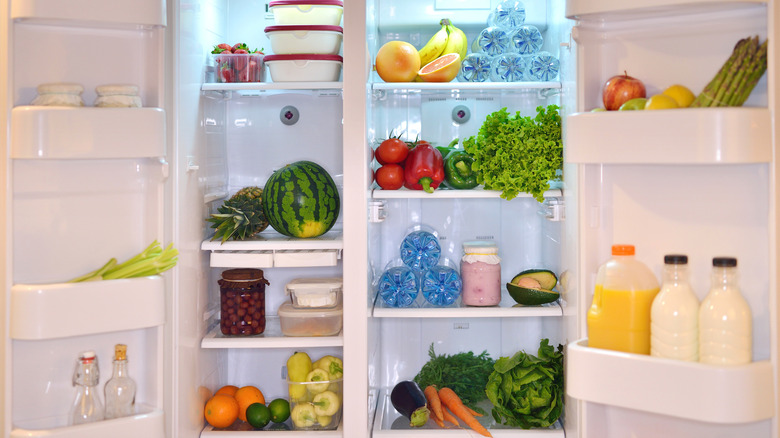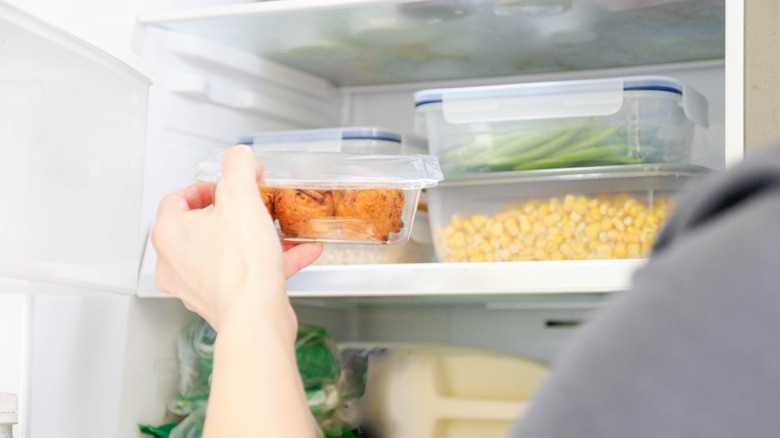The Biggest Mistake People Make When Stocking A Fridge (And How To Avoid It)
You may not want to believe that you've been stocking your fridge wrong this whole time, but hear us out. Do you regularly find yourself with spoiled food hidden in the nooks and crannies of your fridge? That might be because you've been packing your refrigerator wrong all along! There, we said it! Don't feel too bad, though — this is a common mistake that practically everyone makes with their refrigerator. Fortunately, Whirlpool kitchen brand manager Bree Lemmen explained to Mashed that this is typically what happens when we don't put the fresh stuff right where we can see it.
"The biggest mistake I see people make when they are stocking their fridge is neglecting to keep perishable items within line of sight," Lemmen told us. "When perishable items are placed in the back of the fridge, they are oftentimes forgotten about and consequently spoil." For that reason, things that go badly quickly — like meat — should be kept in the front (by the way, here are some foods you might not realize will spoil fast). Different groceries also fare better in different areas of the fridge. As Lemmen advised, "Keep raw meats and dairy on the lower shelves of the fridge, as this area tends to be the coldest."
Mind what you store in the door
Because meat tends to spoil within two to five days (depending on the type and cut of protein), keeping it sufficiently covered is another trick for avoiding spoilage and keeping a clean fridge, as Bree Lemmen pointed out: "To prevent juices from raw meats from contaminating other foods, it's a good idea to use glass or plastic containers." If you want to take your fridge to a whole new level, you might even try introducing shower caddies to the mix to make organizing your fridge easier than ever.
The part of the fridge that's perhaps the trickiest to appropriately manage and stock are those pesky door racks. "The fridge door is the area most affected by temperature changes," Lemmen told Mashed, "so it's ideal for items like nut butters, pasteurized juices, condiments such as ketchup and mustard, pickles, and olives." While the top shelf is best for leftovers — far away from the bacteria that may be living on raw foods — dairy products should stay firmly on the middle shelf, where the temperature stays nice and even and the items are right in your line of sight.

